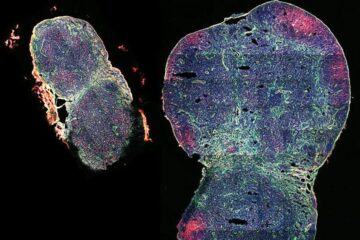Experiment may help size up neutrinos

Our planet is bombarded every second with a large number of chargeless, seemingly massless, particles that originate in nuclear fusion reactions that power the sun. They’re called neutrinos.
According to The Standard Solar Model – the most substantiated model of the sun – the sun should emit around three times more neutrinos than are actually measured on Earth. They are a source of great interest for scientists who seek to better understand elementary particles and the physics of the sun. Indeed, one of the recipients of this year’s Nobel Prize in Physics was Raymond Davis, who first drew attention to the neutrino shortfall.
Three major research efforts (carried out by the underground large detector complexes at Sudbury Neutrino Observatory (SNO) in Canada, the U.S. National Underground Science Laboratory at Homestake and the Super-Kamikande in Japan ) have measured the number of neutrinos that actually reach Earth as a result of a specific reaction in the sun (thus the experiments are sensitive to only a small fraction of the solar neutrino spectrum). To better understand the shortfall of neutrinos on Earth, scientists have been trying to determine precisely how many neutrinos are emitted as a result of this reaction in the lab, so as to compare them with the number that actually reach Earth as measured by SNO, Kamiokande and Homestake.
However, mostly due to difficulties with the preparation and homogeneity of a central component in the reaction (the target made of the radioactive isotope of mass 7 of the beryllium element), large discrepancies persisted. The present experiment, conducted by Prof. Michael Hass of the Weizmann Institute’s Particle Physics Department, uses in a novel way a 2 mm diameter target of the beryllium 7 nuclei, prepared at the ISOLDE (CERN) laboratory and brought to the Van de Graaff accelerator of the Weizmann Institute, Israel, for the measurement of the reaction. The results of this measurement, with less than a 4% margin of error, may draw to a close this reaction’s standing as the largest source of error in the Standard Solar Model estimates of the measured neutrino flux.
Media Contact
More Information:
http://www.weizmann.ac.il/All latest news from the category: Physics and Astronomy
This area deals with the fundamental laws and building blocks of nature and how they interact, the properties and the behavior of matter, and research into space and time and their structures.
innovations-report provides in-depth reports and articles on subjects such as astrophysics, laser technologies, nuclear, quantum, particle and solid-state physics, nanotechnologies, planetary research and findings (Mars, Venus) and developments related to the Hubble Telescope.
Newest articles

Red light therapy for repairing spinal cord injury passes milestone
Patients with spinal cord injury (SCI) could benefit from a future treatment to repair nerve connections using red and near-infrared light. The method, invented by scientists at the University of…

Insect research is revolutionized by technology
New technologies can revolutionise insect research and environmental monitoring. By using DNA, images, sounds and flight patterns analysed by AI, it’s possible to gain new insights into the world of…

Expanding a lymph node, boosting a vaccine
A biomaterial vaccine enhances and sustains lymph node expansion following vaccination, boosting anti-tumor immunity in an animal model. Each one of us has around 600 lymph nodes (LNs) – small,…





















